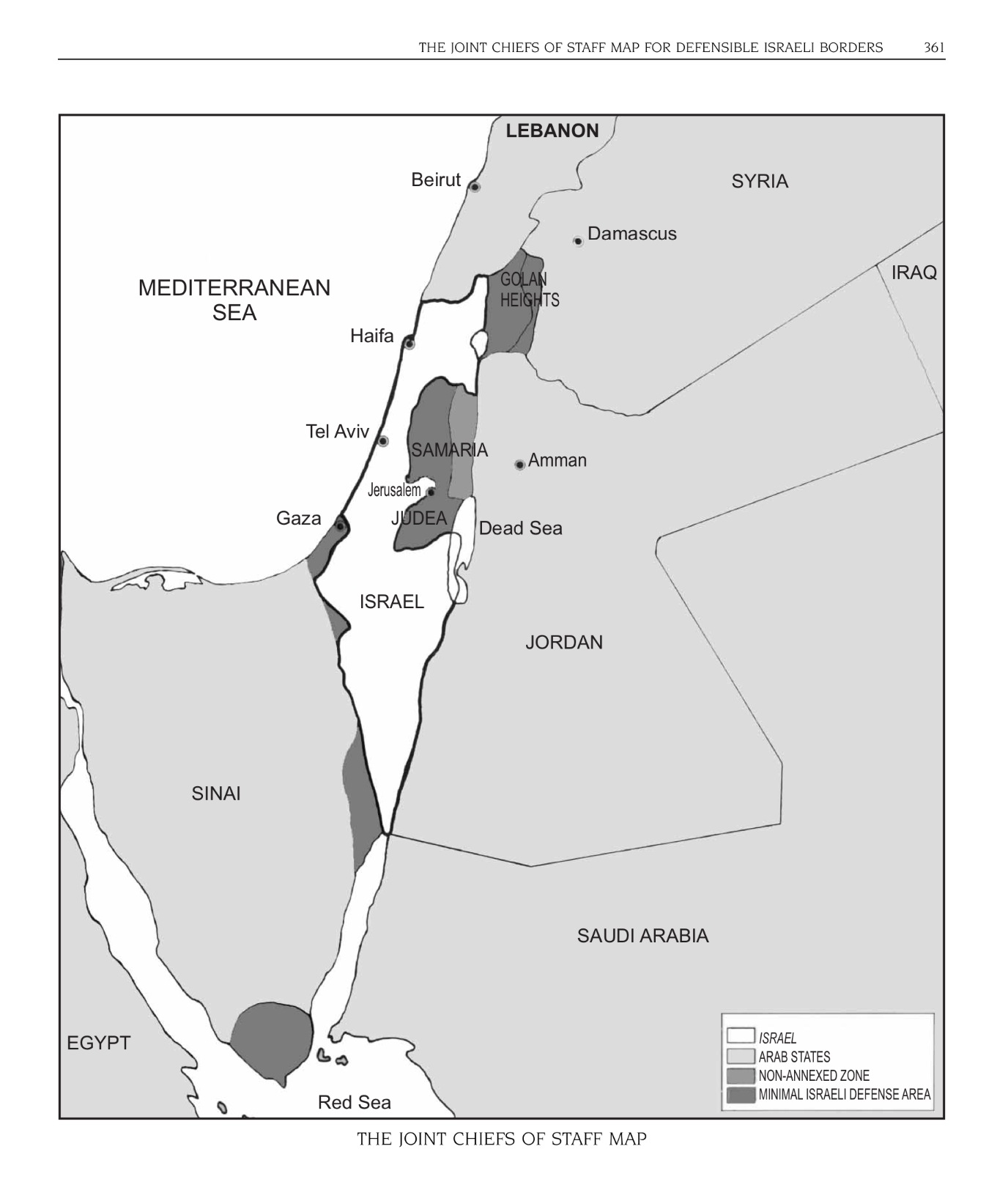Lyndon Johnson Administration: Memorandum from Joint Chiefs of Staff on Defensible Borders
(June 29, 1967)
MEMORANDUM FOR THE SECRETARY OF DEFENSE
(JCSM-373-67)
Subject: Middle East Boundaries
-
Reference is made to your memorandum, dated 19 June 1967, subjects as above, which requested the views of the Joint Chiefs of Staff, without regard to political factors, on the minimum territory, in addition to that held on 4 June 1967, Israel might be justified in retaining in order to permit a more effective defense against possible conventional Arab attack and terrorist raids. [emphasis added]
-
From a strictly military point of view, Israel would require the retention of some captured territory in order to provide militarily defensible borders. [emphasis added] Determination of territory to be retained should be based on accepted tactical principles such as control of commanding terrain, use of natural obstacles, elimination of enemy-held salients, and provision of defense in-depth for important facilities and installations. More detailed discussions of the key border areas mentioned in the reference are contained in the Appendix hereto. In summary, the views of the Joint Chiefs of Staff regarding these areas are as follows:
a. The Jordanian West Bank. Control of the prominent high ground running north-south through the middle of West Jordan generally east of the main north-south highway along the axis Jennin-Nablus-Bira-Jerusalem and then southeast to a junction with the Dead Sea at the Wadi el Daraja would provide Israel with a militarily defensible border. The envisioned defensive line would run just east of Jerusalem; however, provision could be made for internationalization of the city without siginificant detriment to Israel's defensive posture.
b. Syrian Territory Contiguous to Israel. Israel is particularly sensitive to the prevalence of terrorist raids and border incidents in this area. The presently occupied territory, the high ground running generally north-south on a line with Qnaitra about 15 miles inside the Syrian border, would give Israel control of the terrain which Syria has used effectively in harrassing the border area.
c. The Jerusalem-Latrun Area. See subparagraph 2a above.
d. The Gaza Strip. By occupying the Gaza Strip, Israel would trade approximately 45 miles of hostile border for eight. Configured as it is, the strip serves as a salient for introduction of Arab subversion and terrorism, and its retention would be to Israel's military advantage.
e. The Negev-Sinai Border. Except for retention of the demilitarized zone around Al Awja and some territory for the protection of the port of Eilat, discussed below, continued occupation fo the Sinai would present Israel with problems outweighing any military gains.
f. The Negev-Jordan-Aqaba-Strait of Tiran Area. Israel's objectives here would be innocent passage through the Gulf of Aqaba and protection of its port at Eilat. Israel could occupy Sharm ash-Shaykh with considerable inconvenience but could rely on some form of internationalization to secure free access to the gulf. Failing this, Israel would require key terrain in the Sinai to protect its use of the Strait of Tiran. Eilat, situated at the apex of Israel's narrow southern tip, is vulnerable to direct ground action from Egyptian territory. Israel would lessen the threat by retention of ap ortion of the Sinai Peninsula south and east of the Wadi el Gerafi then east to an itnersection with the Gulf of Aqaba at approximately 29° 20' north latitude.
3. It is emphasized that the above conclusions, in accordance with your terms of reference are based solely on military considerations from the Israeli point of view.
For the Joint Chiefs of Staff:
Signed Earle G. Wheeler
Chairman, Joint Chiefs of Staff
Source: Can Israel Survive a Palestinian State? Michael Widlanski, Institute for Advanced Strategic and Political Studies, Ariel Center for Policy Research



